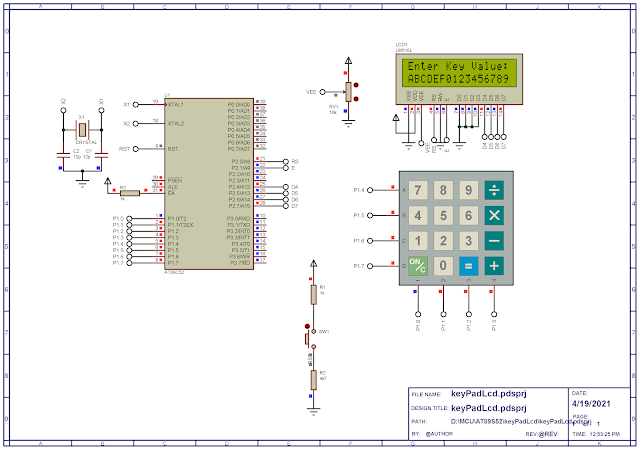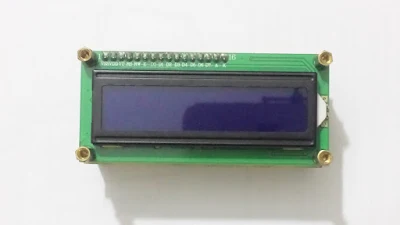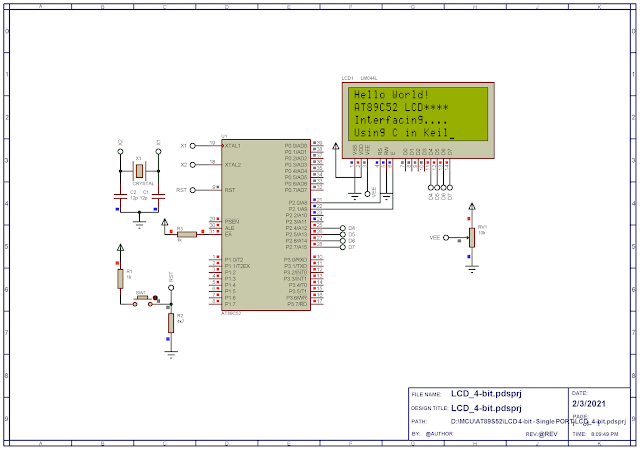We have seen about 4x4 matrix keypad and character LCD interfacing with AT89C52 in previous post. Now let put these two external devices to work together with this controller.
In this programming example, I use a 4x4 matrix keypad and a HD44780-based character LCD, controlled by AT89C52. The two lines character LCD shows the received the controller received from keypad.
This keypad has 16 value ranging from 1 to 9, and from A to F in ASCII format.
 |
| Circuit diagram |
Click here to download source file.



